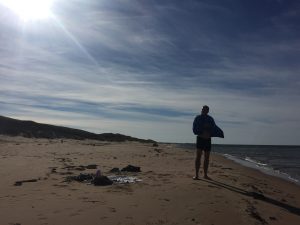 Another year has gone by and it’s time to talk about Prince Edward Island’s top three weather stories of 2017. This past year continues to remind us of the important part weather plays in our everyday lives. Every year brings stories of weather no matter where you are, and Prince Edward Island is no different.
Another year has gone by and it’s time to talk about Prince Edward Island’s top three weather stories of 2017. This past year continues to remind us of the important part weather plays in our everyday lives. Every year brings stories of weather no matter where you are, and Prince Edward Island is no different.
And while I am tempted to speak about the wild temperature swings of early February where temperatures changed an average of a degree Celsius per hour over a 36-hour period, or the poor visibility from the “redouts” some drivers experienced in June around Summerside when wind gusts of up to 70 km/h kicked up red Island soil, I will focus on my top three weather stories for 2017, and how they affected Prince Edward Island.
Number 3 – Severe Summer Thunderstorm
A severe summer thunder and lightning storm on July 21 knocked out power to 20,000 Maritime Electric customers during the height of the storm. Blamed on the higher than normal water temperatures in the Gulf of St. Lawrence – three to five degrees above normal for that time of year – the massive thunderstorm rolled over Prince Edward Island causing marble-sized hail stones to chip the paint from the siding of the house of Maureen Campbell-Hanley at Dingwells’ Mills, and uprooting a large tree in her backyard. The Brackley Drive-In movie theatre was hit by lightning before 10 p.m. and had to close due to the damage to the $14,000 computer that manages the digital movies. “It was a little shocking,” said owner Bob Boyle. The torrential rainfall turned ponds, rivers and streams bright red from silt run-off, and led to a fish kill in Campbellton.
Number 2 – Beach Day Temperatures in Late October
Summer did not want to say goodbye in 2017 with new record high temperatures across PEI on October 24 and 25 fit for a day at the beach. A “conveyor belt of warm, southerly air” brought temperatures averaging 11.4 degrees Celsius above normal in Charlottetown and 12.1 degrees Celsius above normal in Summerside. Those October temperatures were similar to PEI summer temperatures – about 1.5 degrees below the average August temperature in Charlottetown and less than a degree below the Summerside August average. Even a white-sided dolphin was seen in October around the Hillsborough River in Mount Stewart due to the warm weather.
Number 1 – Dry Summer
The dry summer climate affected everything from potatoes to berries – straw, rasp and cran. Warmer and drier than normal weather in October led to a quicker potato harvest as it was easier to get them dug out of the ground, but the drier climate during the summer growing season led to a lower yield for many potato farmers on the Island. In 2017, PEI produced 23.66 million hundredweight (cwt.) of potatoes, down eight percent, or two million cwt., from 2016. Part of the lower yield can be blamed on the drier climate. Between June and September, Charlottetown normally receives 373.3 millimetres of rain, but in 2017, rainfall was down to 323.4 millimetres, with three of four months being below normal. Some crops like potatoes, in an ideal world, need about 25 millimetres of rainfall per week. An eight percent decline in potato production and growing demand in 2017 forced PEI french fry processing plants to buy potatoes from Alberta, a distance of about 4,575 kilometres, which is unusual. The last time this happened was back in 2001 when PEI had a severe drought, potatoes were shipped from as far as Saskatchewan.
The dry weather also affected the size of PEI berries. Normally 15 to 20 strawberries will fill a box for market, but in 2017 it took double that number requiring farmers to go over their fields twice as often to getting the quantity needed. Some PEI raspberry growers had yields in 2017 about a quarter of what it was last year due to the weather with its winter freeze-thaw cycles, the damp spring and the dry summer which all had a negative impact on the raspberry canes. Cranberry growers on PEI use several millions gallons of water to flood one field and allow the berries to float to the top and be harvested. The lack of rain was hard on cranberry growers in 2017 as even water reservoirs were low after the dry summer. Many growers were unable to harvest a crop in 2017 because there was not enough rain for the plants, or to float the berries during harvest.
Islanders love their weather. Islanders are defined by the weather – we live by it. We are at the whims of Nature and the weather it brings. It keeps us at home, keeps us from work, keeps our kids from school yet it brings communities together. While tragic at times, our weather brings out our great spirit of humanity, sense of community and commitment to always look out for each other. From North Cape to East Point, West Point to Murray Head – and all points in-between – weather shapes who we are. Happy Christmas to all.
. The PEI Weather Trivia Calendar 2018 is now available for purchase at Murphy’s pharmacies and the Bookmart book store. This year’s calendar offers 365 all new PEI weather stories for every day of the year; twelve beautiful full-colour PEI weather photographs; information about extreme rainfall events; the weather history of Greenwich, PEI; historical PEI weather stories about PEI automobile drivers switching to the right side of the road (1924), the first commercial radio station on PEI (1925), and the Second World War (1939); and much, much more!
Questions? Contact Adam Fenech at afenech@upei.ca or (902) 620-5220
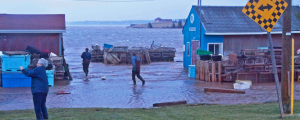




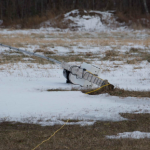 The UPEI Climate Research Lab maintains a network of climate stations across the province, which provides climate data for events such as this storm. One of the UPEI Stations located in Glen Valley blew down on January 5th at 8:20 am when a wind gust recorded at 116 km/h occurred. A photo of the station after it was blown down is provided in Figure 1.
The UPEI Climate Research Lab maintains a network of climate stations across the province, which provides climate data for events such as this storm. One of the UPEI Stations located in Glen Valley blew down on January 5th at 8:20 am when a wind gust recorded at 116 km/h occurred. A photo of the station after it was blown down is provided in Figure 1.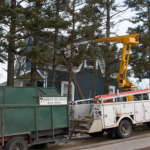
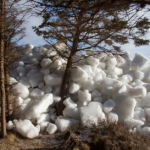
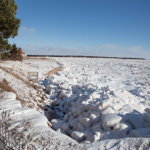
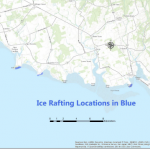
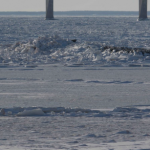
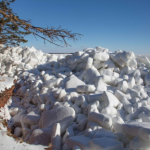
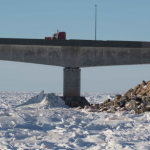
 Another year has gone by and it’s time to talk about Prince Edward Island’s top three weather stories of 2017. This past year continues to remind us of the important part weather plays in our everyday lives. Every year brings stories of weather no matter where you are, and Prince Edward Island is no different.
Another year has gone by and it’s time to talk about Prince Edward Island’s top three weather stories of 2017. This past year continues to remind us of the important part weather plays in our everyday lives. Every year brings stories of weather no matter where you are, and Prince Edward Island is no different.